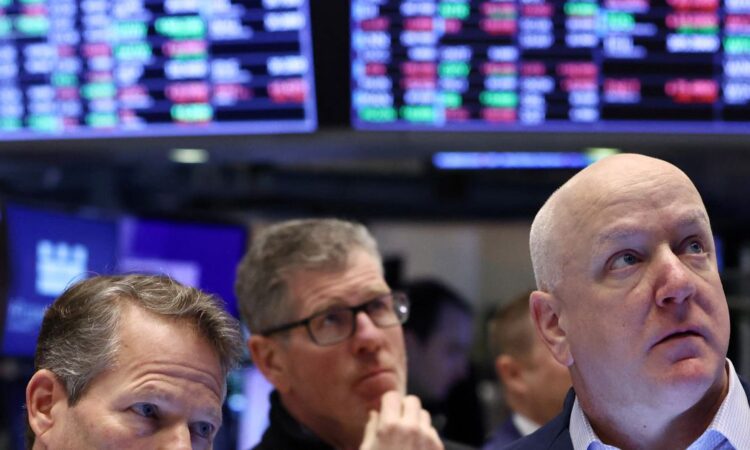
Feb 14 (Reuters) – U.S. equity indexes were mixed and the dollar was little changed in a volatile market on Tuesday as data showed U.S. consumer inflation stayed sticky in January, pushing out expectations of when the Federal Reserve will pause its rate-hiking cycle.
The benchmark S&P 500 index (.SPX) swayed between positive and negative territory while U.S. Treasury yields were higher, having briefly declined after the data.
The consumer price index increased 6.4% in the 12 months through January, marking its smallest annual rise since late 2021 but faster than the 6.2% economists had expected.
Month-on-month, consumer prices rose 0.5% in January, after gaining 0.1% in December, the Labor Department said on Tuesday.
“The concern today is that inflation is not coming down fast enough and the Fed has to stay hawkish. When the bond market gets jittery it translates into the stock market,” said John Augustine, chief investment officer at Huntington National Bank in Columbus, Ohio.
Latest Updates
View 2 more stories
Along with the data, Augustine pointed to contrasting messages from officials as a reason for the stock market’s struggle to find a direction on Tuesday.
Philadelphia Fed President Patrick Harker said the Fed is not finished raising rates yet but is “likely close.”
But New York Fed President John Williams said that while inflation is moderating, the central bank has a ways to go to slow price increases and that it may take years to hit its 2% inflation target.
While some investors had harbored hopes the Fed could pause rate hikes after the next meeting, the data implied otherwise.
“I don’t think (this report) moves the needle for the Fed, and I suspect they’re taking a hard look at the data. Does it mean we are headed for at least two more rate hikes? Absolutely,” said Peter Cardillo, chief market economist at Spartan Capital Securities, New York.
“My guess is the year-over-year decline in topline and core (CPI) suggests another 25 basis point hike in March and another one in May.”
The S&P 500 (.SPX) gained 4.03 points, or 0.10%, to 4,141.32. Its session peak so far was a roughly 0.5% gain and its trough a 1% decline.
The Dow Jones Industrial Average (.DJI) fell 83.49 points, or 0.24%, to 34,162.44 while the Nasdaq Composite (.IXIC) added 58.53 points, or 0.49%, to 11,950.32.
The pan-European STOXX 600 index (.STOXX) rose 0.08% and MSCI’s gauge of stocks across the globe (.MIWD00000PUS) gained 0.16%. Emerging market stocks (.MSCIEF) lost 0.04%.
In currencies, the dollar index rose 0.048%, with the euro up 0.13% to $1.0734. This was well above the greenback’s session low, which was a decline of 0.73%, but below its session high, which was a 0.26% gain.
The Japanese yen weakened 0.49% versus the greenback at 133.07 per dollar, while sterling was last trading at $1.2168, up 0.27% on the day.
In U.S. Treasuries, benchmark 10-year notes were up 4.4 basis points to 3.763%, from 3.719% late on Monday. The 30-year bond was last up 0.9 basis points to yield 3.8014%, from 3.792%. The 2-year note was last was up 9 basis points to yield 4.6239%, from 4.534%.
Oil prices fell after the U.S. government said it would release more crude from its Strategic Petroleum Reserve lifting some supply concerns from the market.
U.S. crude settled down 1.35% at $79.06 per barrel and while Brent finished at $85.58, down 1.19%.
Spot gold added 0.1% to $1,854.99 an ounce. U.S. gold futures gained 0.11% to $1,854.00 an ounce.
Reporting by Sinéad Carew, Stephen Culp, Stella Qiu, Susan Mathew and Amanda Cooper; Editing by Sam Holmes, Sharon Singleton, Chizu Nomiyama and Christina Fincher
Our Standards: The Thomson Reuters Trust Principles.




